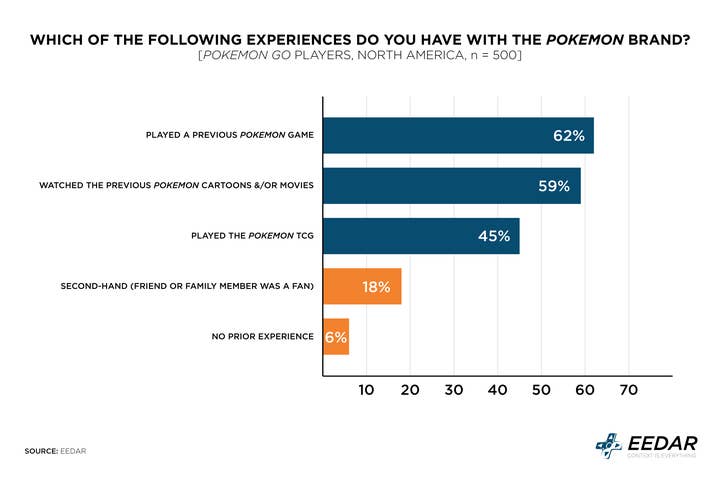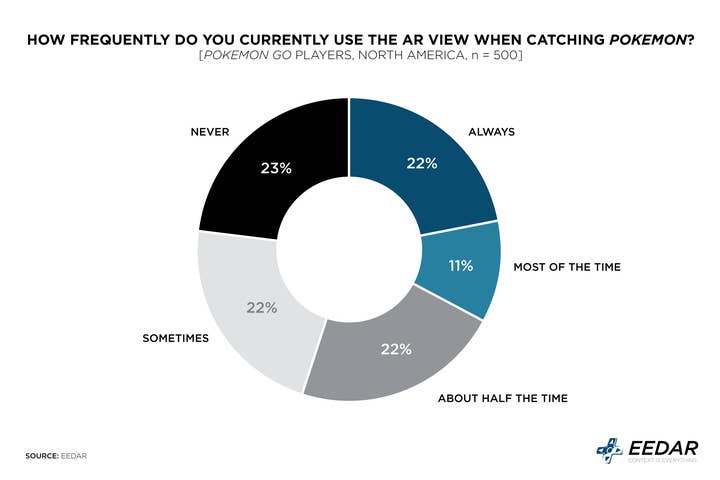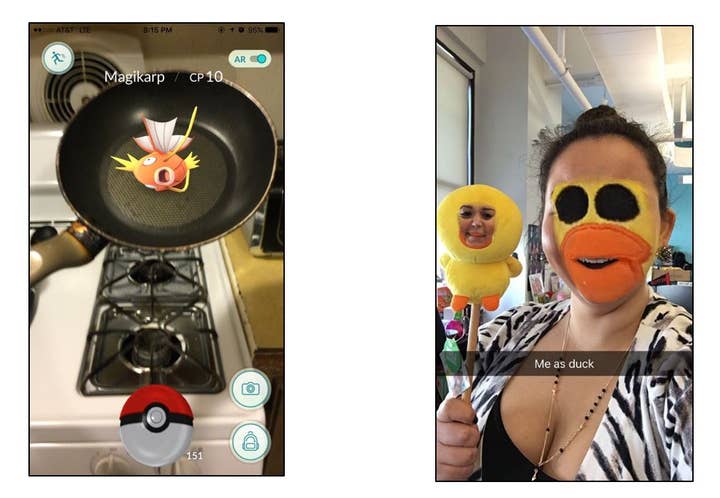There is a formula to Pokemon Go's Success, but it's not AR
Patrick Walker, EEDAR VP of Insights, looks at the implications of Pokemon Go's success for mobile and AR gaming
Pokemon Go released this summer with a bang, catapulting to the top of the grossing and downloads rankings in nearly every region where the title launched. This success has brought a lot of attention to the innovative title and its features, with many journalists and pundits heralding it as the rise of augmented reality. And it's true: players seeing fictional creatures on a real world backdrop is a fun and important feature of Pokemon Go, and likely contributed to the game's viral growth. However, an analysis of Pokemon player data suggests that there is a magic formula behind the success of the game, and it that has more to do with organic virality and brand power than the dawn of AR.
The Key Innovation in Pokemon Go is Location-Based Gaming
Pokemon Go is the first breakout mobile game that could only exist on a smartphone. Think about the hit mobile games since 2008. Candy Crush Saga, Clash of Clans, Words with Friends, Flappy Bird, and Draw Something could all exist on a PC or console. The gameplay might be terrible on these platforms, but the games would be fully functional. Pokemon Go is the Uber of mobile gaming. Just like Uber, Pokemon Go isn't possible without the GPS functionality of a smartphone.
The reasons that Pokemon Go players love the game support the important role of real world locations. While players do not call out meeting new people as a major play motivator, they do endorse playing with friends, collecting Pokemon in the world, and getting exercise as the top three reasons for play.

It took a brand as powerful as Pokemon to unlock the potential of location-based gaming
Location-based gaming is not a new idea. In a mobile market where finding success is difficult, the idea of leveraging the GPS in a smartphone to create an innovative gaming experience is an old one. Ingress, the Niantic-developed predecessor to Pokemon Go, has garnered a lot of attention, but there have been many location-based games before Ingress. Shadow Cities, CodeRunner, and Turf Wars are just a few of the notable location-based games, going as far back as 2010.
Location-based gaming has a powerful but limiting network effect. In Pokemon Go, battling for control of a gym is only fun if there is already another player's Pokemon waiting for the challenge. This is the difficulty with creating a location-based game. It is only fun if there are enough players in the network available for interaction. This is where the broad, mainstream appeal of the Pokemon brand is so important. Not only are players of all ages familiar with Pokemon, but the brand is a perfect contextual fit for a collection game. More than 75% of Pokemon Go players have had direct experience with the brand before Pokemon Go, mostly through playing a previous game or watching the cartoon.

Location-based gaming plus the power of the Pokemon brand created viral growth
Shortly after the launch of Pokemon Go, the game was everywhere. In the news, on social media, in conversations with friends - everywhere. The buzz surrounding the game combined with the distribution power of the smartphone created rapid user growth. Pokemon Go was recognized as the fastest-growing mobile game of all time by the Guinness Book of World Records. People were hearing about a new game everywhere, and they only had to pull out their smartphone and make a couple clicks to be a part of the in-crowd.

More than half of Pokemon Go players learned about Pokemon Go from a news source, online video, or TV show (52%). Another 35% found out about the game from a friend or family member. Only 5% found out about the game through the App Store, a much lower percentage than the typical app or game. Stories about Pokemon Go trainers running on freeways and creating mobs in central park may have been sensational, but they definitely contributed to the viral growth of the app.

Augmented-Reality will have its day, but Pokemon Go isn't it
First, a technical definition. Pokemon Go overlays digital locations (e.g. gyms) on top of a digital map of the real world. This could technically be called augmented reality, but this isn't what the majority of people think of when they talk about augmented reality. By this definition, any digital information (Yelp review, travel time, traffic report) present in your Google Maps is augmented reality. Augmented reality, as used by the majority of people, is an augmentation of the human senses (primarily sight). It is shorthand for adding digital information to the world you see around you. AR is Google Glass, Snapchat filters, and Magic Leap... not Google Maps. While this is a distinction that some analysts noted quickly, the mainstream press has often glossed it over.
Pokemon Go does feature simple AR as part of its gameplay, in the collection of Pokemon by throwing balls at a digital creature overlaid on top of the physical world. However, this feature drains the battery life and is often turned off by many players, especially those that are especially committed to the game. Most players indicate that they use the AR mode rarely or never when catching Pokemon.

There is a parallel to be drawn between Pokemon Go and Snapchat in the role that AR plays in the apps. Like Pokemon Go, Snapchat is an app that fully leverages the smartphones mobile capabilities. Users take short, ephemeral videos of their current experience so their followers can share in that experience. There is an AR feature in Snapchat: the use of facial recognition technology to augment pictures with digital features. It's a fun, optional add-on to the core experience of using the app. This is the same role AR plays in Pokemon Go.

There is no question that Pokemon Go has been a huge innovation in mobile gaming and many location-based games will likely try to follow in its footsteps. But a revolutionary AR experience, app, or game is still on the horizon waiting to be developed.
The data used in the analysis is from EEDAR's PlayerPulse monthly tracker of gamer behavior and attitudes. Visit www.eedar.com for more information.
